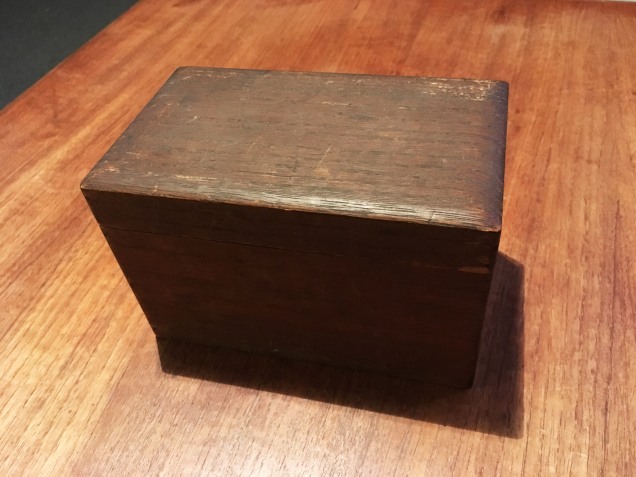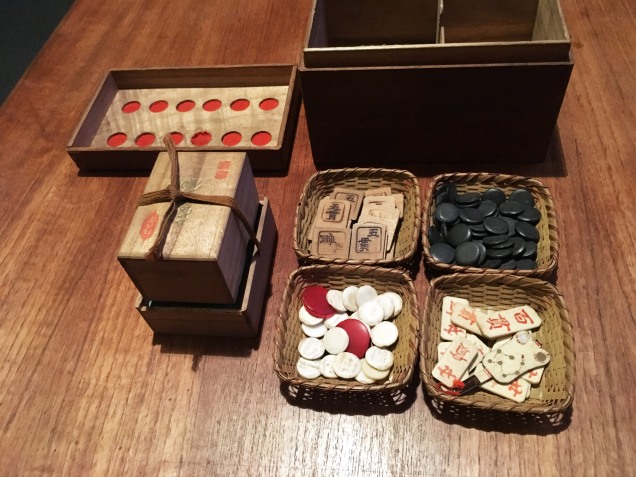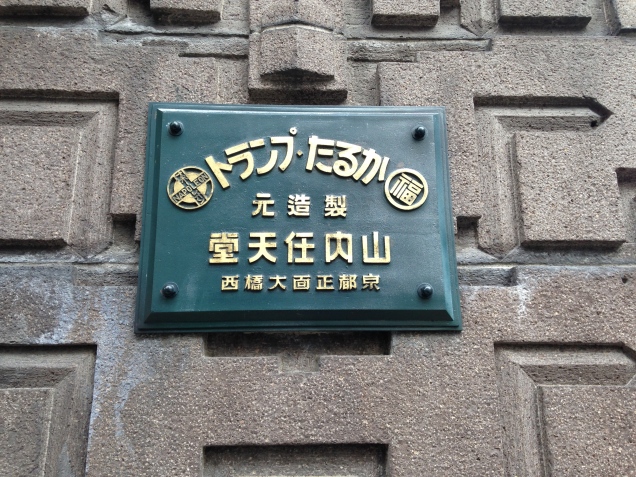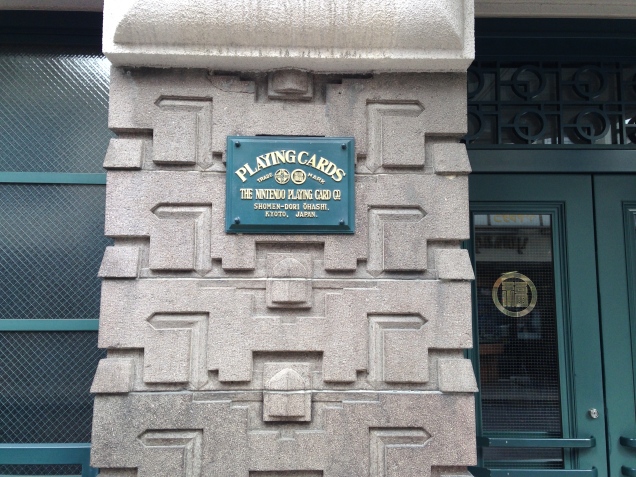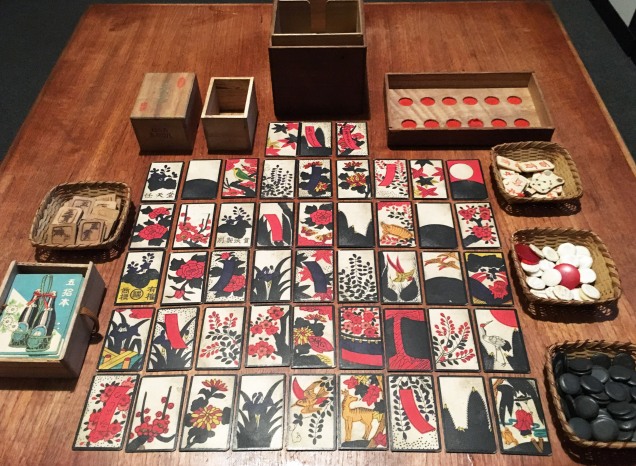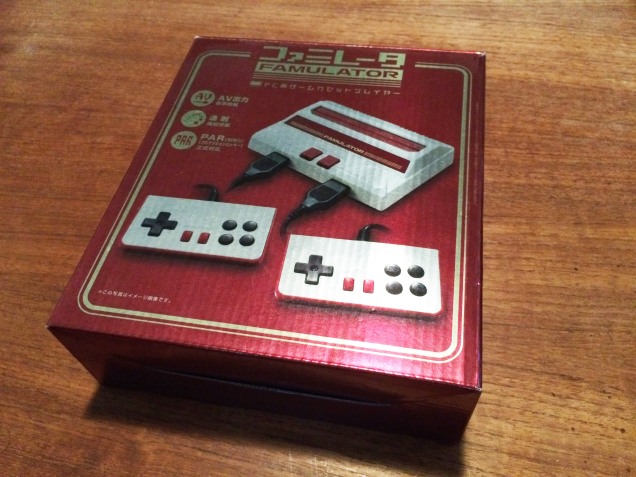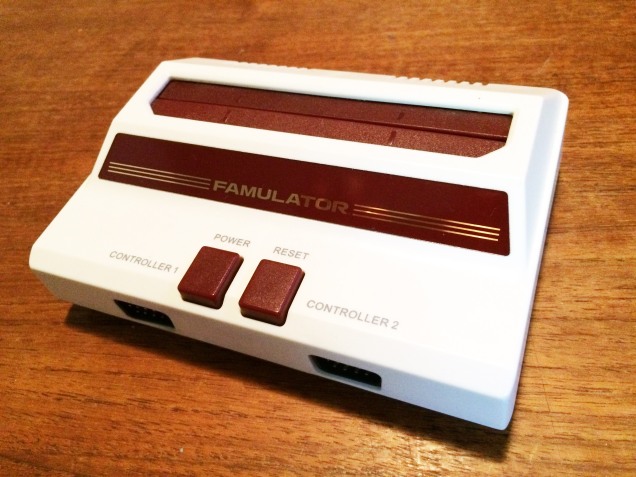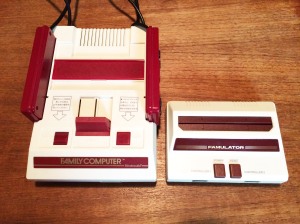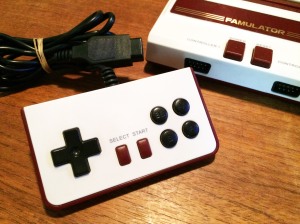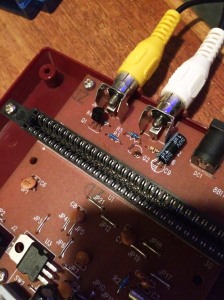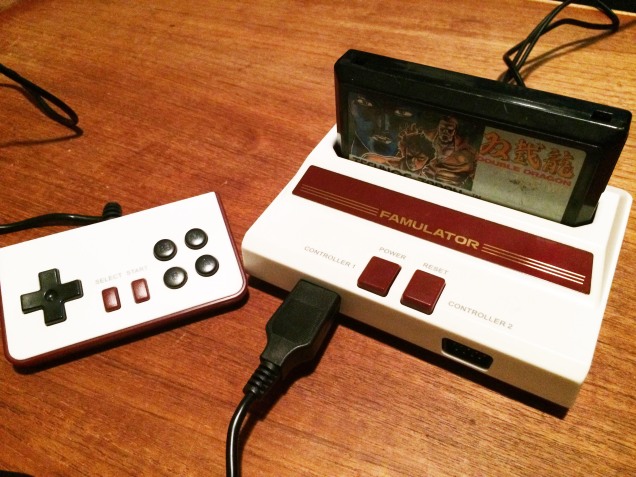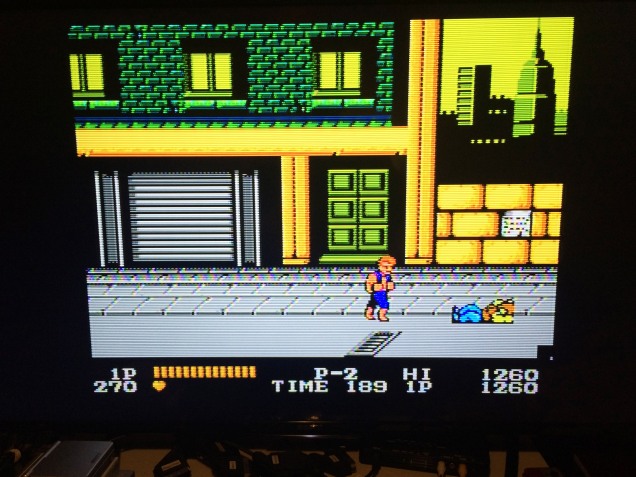Before the Family Computer took over the world, the biggest name in Japanese console games was Epoch. Similar to Nintendo’s Color TV line, Epoch created a series of consoles that played a single game (Space Invaders clones, Baseball etc), and in 1981 the company spun off that hardware design into a cartridge based console, the Cassette Vision.

The Cassette Vision did decently enough, but in 1983 arcade players Nintendo and Sega had entered the space with the Family Computer and SG1000, which were both selling well (very well in Nintendo’s case). So Epoch joined the next generation with the Super Cassette Vision. It’s a very interesting machine because it straddles the line between the generations of that era.
The console design itself bears several marks of the transitional nature of the industry at the time. At first it looks like a controller-less unit, but they’re hidden behind the front panel.
Like all Japanese consoles of the era, the controller cords are attached to the console, but the console has slots to store them much like the Famicom. The SG1000 II and Mark III also followed this Famicom design cue.
They fold out to reveal what are essentially a much better version of the SG1000 controller, itself a cut down version of the Colecovision controller. What makes them better are they use Game & Watch/Famicom style rubber membranes internally for buttons and stick directions, as opposed to the bending metal leaf connectors of Atari/Coleco/SG1000 controllers.
Ironically, Nntendo had the exact same idea in 1984, with their Micro Vs System game & Watch design.
The top of the console features a number pad for selecting game modes etc, which is very reminiscent of the Intellivision and Colecovision’s number pads, though it’s much better having them on the console, making the controllers more compact and comfortable. Similar to the SG1000 and Mark III, there is no start button on the pads, but a pause button on the console itself.
One thing that sets the console apart from others of the era is that it supports RGB-out right from the console. While unlikely to have been used by most customers of the era, today it makes it very easy to get great quality output.

In terms of power, it’s an odd one. The games have a very stable, sharp graphical presentation, with no flicker (Epoch boasts right on the console that it can handle 128 sprites at once), good bright colours, and decent quality sprites.
On that metric, it had the best quality graphics of any console until the PC Engine. But the system is still clearly in the Intellivision/Colecovision era in what it can handle. Backgrounds are always flat colour (or black), there is barely any scrolling and games are either simple, or slow, with little going on. Sound wide it’s probably about the same as the SG1000/Mark III, which is to say far below the Famicom.
But it’s a unique piece of hardware due to this dichotomy between such clean, solid presentation (especially via RGB) and more primitive style games, and it feels a lot like an 80s microcomputer, like the MSX.
Just like the Famicom, games came in cardboard boxes, with a little manual.
Taking another cue from Nintendo, they were on colourful cartridges, allowing quick selection of the game you want to play.
Short and stubby but with an end label, they’re a hybrid shape between the ‘cassette’ like shape of the Famicom and the long Atari style of the Sega carts of the era.
The front of each game cart shows a quick control reference for that game, which is nice.
Pop & Chips is an interesting cart, as it features saving via battery backup. instead of using permanent internal batteries like Nintendo games started to use in the later 80s, the cart simply has a slot for AAs.
Those character designs on Pop & Chips may seem familiar. they look very much like characters from Taito’s Chack’n’Pop (the 1983 ‘prequel’ to Bubble Bobble). It plays somewhat like Lode Runner however.
Along those lines, Epoch were not averse to ripping off other games to support their system. As seen above in the RGB screenshot, Astro Wars explicitly states it’s a Space Invaders derivative, though being much more advanced it feels more like Galaga, as does its sequel.
But some other ‘familiar’ names pop up too.
Wheelie Racer is a version of Data East’s Bump ‘n’ Jump/Burnin’ Rubber/Buggy Popper
Comic Circus is a limited take on Konami’s Circus Charlie with a bit of Sega’s Carnival.
And Elevator Fight a loose take on Taito’s Elevator Action.
I have no idea what Ton Ton Ball is based on, if anything.
There were some licensed official releases of games too. Marked clearly as being ‘From USA’ there was an officially licensed release of First Star Software’s Boulder Dash.
Other notable releases are games based on licences. There was a Lupin the Third game, a Doremon game, and the first ever Dragonball game.
The Super Cassette Vision faded pretty quickly after the Famicom started taking over Japan. It got a small licensed release in France, but didn’t appear anywhere else in the world. Epoch returned to its traditional strengths as a toymaker, and in 1985 created the Sylvanian Families animal dolls toy line that was incredibly successful and continues to this day. One neat link between the product lines is Epoch makes consoles for the Sylvanian Families playsets as well as various gacha toys, including this mini Super Cassette Vision (and mini TV playing Pop & Chips)








































































































































































